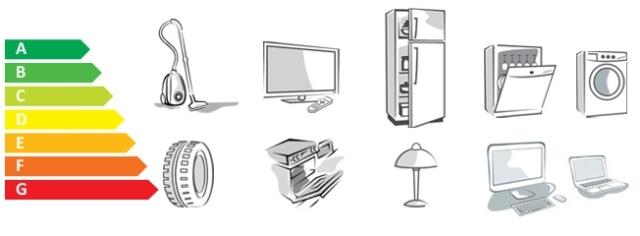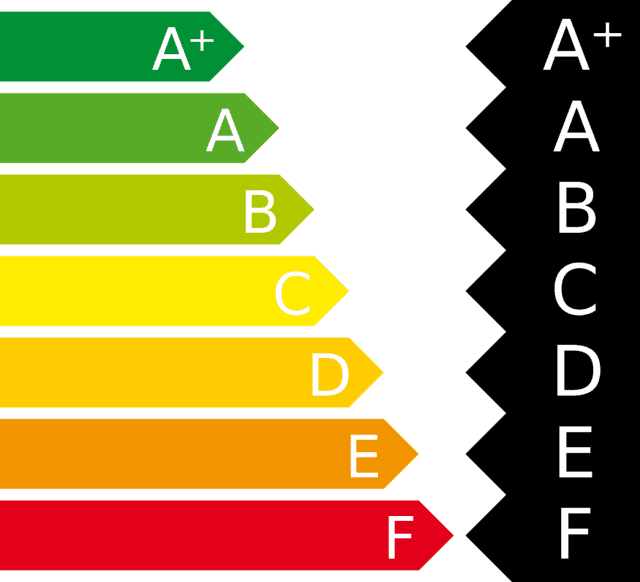Household appliances: pay attention to the label
Not everyone pays attention to the other valuable information contained in the energy class.By now it is recognized at first sight, above all to identify the energy classes and frame the level of consumption of an appliance compared to another of the same category. Let's do some clarity.
The energy label has almost twenty years of history behind it and is an interesting indicator of the evolution of household appliances towards increasingly sustainable solutions and technologies. At first it was just a document that manufacturers voluntarily applied to their devices to underline their ability to save energy but later, since 2011, it has become a legal requirement for all members of the European Union.
From that moment on, an identical label was created for all countries, drawn up in all languages although, as is well known, it is a document mainly composed of graphic symbols, unambiguous and easily recognizable by all consumers.
The prominent element is naturally represented by the scale of arrows which gradually fade from the longer red one, which indicates the least efficient products (therefore which consume more) to the dark green, shorter one, associated with the highest energy classes, which allow you to save more energy.
The arrows are accompanied by a scale of letters that starts from G, for the highest level of consumption, up to A, which indicates the products capable of saving the most electricity.
A few years after the launch of the label, however, some categories of household appliances, such as refrigerators and washing machines, which were among the first to have to display the label by law, have reached such a level of energy efficiency as to exceed the parameters of the first class, A. Thus, three new energy classes A+, A++ and A+++ were gradually introduced.
The legal obligation to apply the energy label has been extended to numerous household appliances, based on a calendar that has seen year after year the mandatory labeling for refrigerators, wine coolers, washing machines, dishwashers, dryers, air conditioners, televisions, electric ovens and, between 2014 and 2015, also vacuum cleaners and extractor hoods.
As the obligation came into force, the placing on the market of products of the most obsolete energy classes was prohibited, which have gradually disappeared.
Thus, to give some concrete examples, in 2011 class A became the minimum level for all washing machines, while the following year the placing on the market of refrigerators and freezers below class A+ was prohibited. The provision referred to new appliances introduced on the market, while it was still possible to deplete old stocks of appliances in the more energy-intensive classes, which in fact have almost disappeared today.
But the label doesn't just show the energy level
It is very important to underline that the evolution of the energy label has made it a real identity card for the appliance, gradually inserting very important information on other aspects and functions of the product and thus allowing a much more precise comparison between appliances of different models or brands.
In fact, the label also states by law the noise level of the appliances and, depending on the device in question, further indicators of effectiveness.
For example, for washing machines it is mandatory to indicate the efficiency of the spin cycle, the annual water consumption and the load capacity. For dishwashers, an indicator on the drying efficiency of the dishes is also added, while vacuum cleaners must specify the effectiveness of suction on hard surfaces or carpets and the level of re-entry of dust into the air.
Will the label change?
Although the energy label has been recognized as a valid tool for comparing household appliances, over time some complications have arisen regarding the way energy levels are indicated.
The speed of technological development in the sector has led to a rapid crowding of the maximum efficiency classes for some products, such as washing machines and refrigerators, for which indications such as "class A+++ -30%" have often been found for years, signaling further progress of luminaire performance, capable of exceeding the current class A+++ by 30% (or more if indicated).
Given the obvious impossibility of continuing to add “+” signs indefinitely, the European Commission has approved the return of the AG scale, but ALONE for products for which the upper classes are too crowded.
The measure will not start before 2019-2020 and provides for a transitional period, after which more attention will have to be paid to products bearing the new e scale don't be surprised if we see class B or lower refrigerators again. The shops will still be adequately prepared to explain all the news.
Source: www.cosedicasa.com














